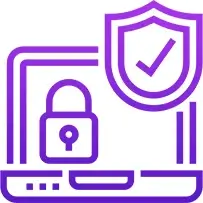Application security can make or break entire companies these days. So how can you better secure your product?
The answer to this question is more important than ever. When a company ignores security issues, it exposes itself to risk. Huge amounts of sensitive data are stored in business applications, and this data could be stolen at any time. Businesses that underinvest in security are liable to end up with financial losses and a bruised reputation.
What’s more, governments are now legislating and enforcing data protection measures. For example, the European Union’s GDPR requires organizations to integrate data protection safeguards at the earliest stages of development. Ignoring these requirements can result in hefty fines.
When end users lose money, they do not care whether the cause lies in application logic or a security breach. Building secure applications is as important as writing quality algorithms. For those who succeed, cost-effective security improvements provide an edge over competitors.
What is the Secure Development Lifecycle (SDL)?
There is a ready-made solution that provides a structured approach to application security—the secure development lifecycle (SDL). It is a set of development practices for strengthening security and compliance. For maximum benefit, these practices should be integrated into all stages of software development and maintenance.



